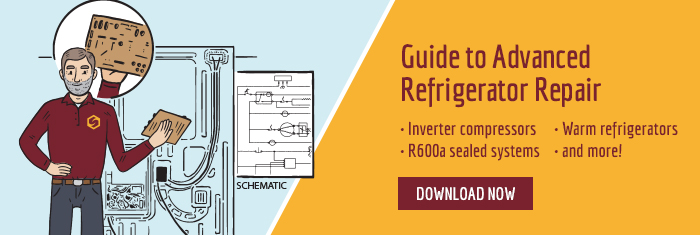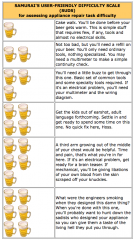FAQs | Repair Videos | Academy | Newsletter | Contact
Search the Community
Showing results for tags 'suds'.
-
I recently had a customer whose washing machine would not drain. I attributed this problem to the excess of suds in the tub. The customer seemed skeptical of this diagnosis and so this problem seemed like a good topic to delve further into. Oversudsing issues are very common in washing machines and dishwashers. Using the incorrect type, or an excess, of detergent can cause an oversuds situation. This often leads to drainage problems. The drain pump cannot pump out overly sudsy water. But why not? It's because of something called cavitation. Cavitation is the formation of vapor cavities in a liquid. Washing machines and dishwashers use centrifugal pumps. A centrifugal pump needs an uninterrupted supply of water to function properly. The spinning impeller causes the water inside the pump to spin as well, creating centrifugal force, which causes the water to flow away from the center, or inlet, of the pump and out of the discharge port. This displacement creates negative pressure which sucks more water into the pump. Introduction of suds, which are mostly air, into a spinning impeller will interrupt the flow of water and introduce air into the system, disrupting the vacuum being created, and ultimately preventing the pump from being able to discharge the water. This will not be resolved until the suds are eliminated. Fabric softener or vegetable oil can be added to the machine to help to eliminate the suds and allow the pump to finish draining the water. The video below is a brief introduction to the way in which centrifugal pumps function. Thanks for reading. David RD Appliance Service, Corp. http://www.rdapplianceservice.com RD Appliance Blog
- 8 comments
-
- 4
-
.png)
-
- suds
- cavitation
-
(and 1 more)
Tagged with:
-

Samurai's User-Friendly Difficulty Scale (SUDS) for Assessing Appliance Repair Task Difficulty
Samurai Appliance Repair Man posted a gallery image in The Appliantology Gallery
From the album: Miscellaneous
How hard will it be to fix? -
From the album: Dishwasher Repair
If your dishwasher looks like this, you may want to consider cutting back on the detergent just a tad. Or not using quite so much dishwashing liquid!- 1 comment
-
- 1
-
.png)
-
- dishwasher
- suds
-
(and 1 more)
Tagged with:




